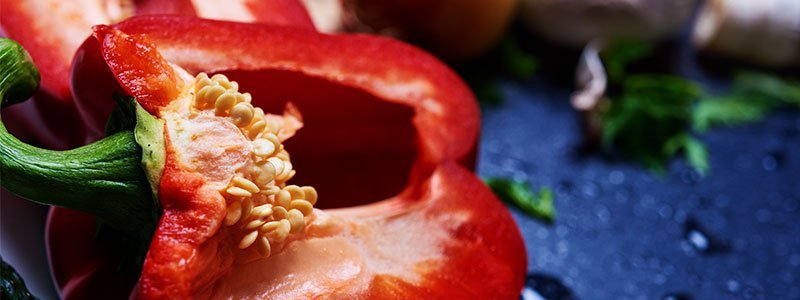Belladonna
Other Names
Atropa belladonna, Atropa acuminata, Baccifère, Belladona, Belladone, Belle-Dame, Belle-Galante, Bouton Noir, Cerise du Diable, Cerise Enragée, Cerise d'Espagne, Deadly Nightshade, Devil's Cherries, Devil's Herb, Divale, Dwale, Dwayberry, Grande Morelle, Great Morel, Guigne de la Côte, Herbe à la Mort, Herbe du Diable, Indian Belladonna, Morelle Furieuse, Naughty Man's Cherries, Poison Black Cherries, Suchi.
Belladonna is a plant. The leaf and root are used to make medicine.
The name "belladonna" means "beautiful lady," and was chosen because of a risky practice in Italy. The belladonna berry juice was used historically in Italy to enlarge the pupils of women, giving them a striking appearance. This was not a good idea, because belladonna can be poisonous.
Since 2010, the FDA has been cracking down on homeopathic infant teething tablets and gels. These products may contain inaccurate doses of belladonna. Serious side effects including seizures, breathing problems, tiredness, constipation, difficulty urinating, and agitation have been reported in infants taking these products.
Though widely regarded as unsafe, belladonna is taken by mouth as a sedative, to stop bronchial spasms in asthma and whooping cough, and as a cold and hay fever remedy. It is also used for Parkinson's disease, colic, inflammatory bowel disease, motion sickness, and as a painkiller.
Belladonna is used in ointments that are applied to the skin for joint pain, pain along the sciatic nerve, and general nerve pain. Belladonna is also used in plasters (medicine-filled gauze applied to the skin) for mental disorders, a behavior disorder that involves hyperactivity and inability to concentrate, excessive sweating, and asthma.
Belladonna is also used as suppositories for hemorrhoids.
How does it work?
Belladonna has chemicals that can block functions of the body's nervous system. Some of the body functions regulated by the nervous system include salivation, sweating, pupil size, urination, digestive functions, and others. Belladonna can also cause increased heart rate and blood pressure.
Insufficient Evidence to Rate Effectiveness for...
- Irritable bowel syndrome (IBS). Taking belladonna by mouth along with the drug phenobarbital does not improve symptoms of this condition.
- Arthritis-like pain.
- Asthma.
- Colds.
- Hay fever.
- Hemorrhoids.
- Motion sickness.
- Nerve problems.
- Parkinson's disease.
- Spasms and colic-like pain in the stomach and bile ducts.
- Whooping cough.
- Other conditions.
Natural Medicines Comprehensive Database rates effectiveness based on scientific evidence according to the following scale: Effective, Likely Effective, Possibly Effective, Possibly Ineffective, Likely Ineffective, and Insufficient Evidence to Rate (detailed description of each of the ratings).
Belladonna is LIKELY UNSAFE when taken by mouth in adults and children. It contains chemicals that can be toxic.
Side effects of belladonna result from its effects on the body's nervous system. Symptoms include dry mouth, enlarged pupils, blurred vision, red dry skin, fever, fast heartbeat, inability to urinate or sweat, hallucinations, spasms, mental problems, convulsions, coma, and others.

QUESTION
Next to red peppers, you can get the most vitamin C from ________________.
See Answer
Congestive heart failure (CHF): Belladonna might cause rapid heartbeat (tachycardia) and might make CHF worse.
Constipation: Belladonna might make constipation worse.
Down syndrome: People with Down syndrome might be extra-sensitive to the potentially toxic chemicals in belladonna and their harmful effects.
Esophageal reflux: Belladonna might make esophageal reflux worse.
Fever: Belladonna might increase the risk of overheating in people with fever.
Stomach ulcers: Belladonna might make stomach ulcers worse.
Gastrointestinal (GI) tract infections: Belladonna might slow emptying of the intestine, causing retention of bacteria and viruses that can cause infection.
Gastrointestinal (GI) tract blockage: Belladonna might make obstructive GI tract diseases (including atony, paralytic ileus, and stenosis) worse.
Hiatal hernia: Belladonna might make hiatal hernia worse.
High blood pressure: Taking large amounts of belladonna can increase blood pressure. This might make blood pressure become too high in people with high blood pressure.
Narrow-angle glaucoma: Belladonna might make narrow-angle glaucoma worse.
Psychiatric disorders. Taking large amounts of belladonna might worsen psychiatric disorders.
Rapid heartbeat (tachycardia): Belladonna might make rapid heartbeat worse.
Ulcerative colitis: Belladonna might promote complications of ulcerative colitis, including toxic megacolon.
Difficulty urinating (urinary retention): Belladonna might make this urinary retention worse.
Cisapride (Propulsid)Interaction Rating: Moderate Be cautious with this combination.Talk with your health provider.
Belladonna contains hyoscyamine (atropine). Hyoscyamine (atropine) can reduce the effects of cisapride. Taking belladonna with cisapride might reduce the effects of cisapride.
Drying medications (Anticholinergic drugs)Interaction Rating: Moderate Be cautious with this combination.Talk with your health provider.
Belladonna contains chemicals that cause a drying effect. It also affects the brain and heart. Drying medications called anticholinergic drugs can also cause these effects. Taking belladonna and drying medications together might cause side effects including dry skin, dizziness, low blood pressure, fast heartbeat, and other serious side effects.
Some of these drying medications include atropine, scopolamine, and some medications used for allergies (antihistamines), and for depression (antidepressants).
The appropriate dose of belladonna depends on several factors such as the user's age, health, and several other conditions. At this time there is not enough scientific information to determine an appropriate range of doses for belladonna. Keep in mind that natural products are not always necessarily safe and dosages can be important. Be sure to follow relevant directions on product labels and consult your pharmacist or physician or other healthcare professional before using.

